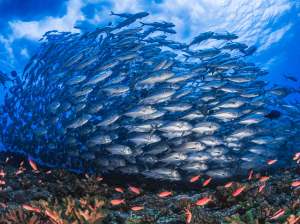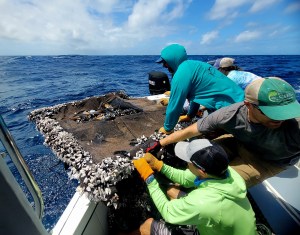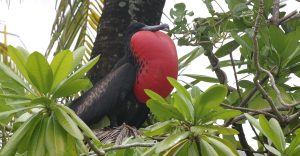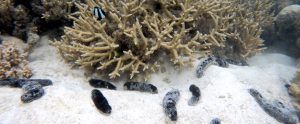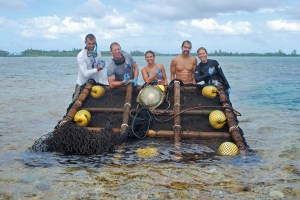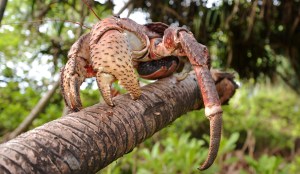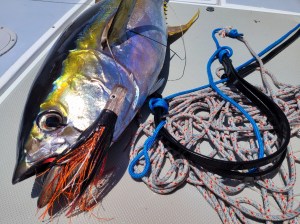Discover stories in Palmyra
Fish Aggregating Devices Could Enhance the Effectiveness of Blue Water Marine Protected Areas
Research from TNC’s Palmyra Atoll suggests fish aggregating devices could increase the time mobile species spend within blue water MPAs.
How to Catch a Wild dFAD
A small boat, four people, 500 pounds (or more) of rope, netting, floats, rafts and sometimes barnacles. Gloves definitely required.
Small but Mighty: Pacific Island Atolls are Globally Important Sites for Tropical Seabirds
Global conservation efforts largely overlook the important contributions of atolls to the protection, restoration, and survival of tropical seabirds.
Want to Suppress Coral Disease? Bring Back Sea Cucumbers
By feeding on microbial pathogens in marine sediment, the weird and wonderful sea cucumber can enhance reef resilience by suppressing coral diseases.
Coral Atolls are Not a Lost Cause
An international team argues that strategic ecological restoration could save coral atoll islands from the rising seas of climate change.
Lost and Found: A Story from Palmyra Atoll
When you work in a place remote as Palmyra Atoll, if equipment fails, there won’t be a midweek run to Bass Pro Shops.
The Nature Conservancy Announces Expansion of First dFAD Partnership
This year on World Tuna Day, The Nature Conservancy (TNC) Hawai‘i and Palmyra announces the expansion of the first drifting […]
Palmyra’s Fishing for Science Program Tags 1,000th Fish
Launched in 2018, the program tagged its 1000th fish on December 5, 2022—a significant milestone in a challenging environment.
Meet the World’s Largest Land Crab
The coconut crab can lift 60 pounds and crack coconuts. It’s also facing a perilous future.
Resilience and Stability on Palmyra’s Coral Reefs
In hopeful news, coral reefs at Palmyra Atoll show long-term stability, recovery and resilience, despite two bleaching events within the last decade.
How Scientists Fish: The Hand Line
On Palmyra Atoll, getting big fish on board quickly relies on an old fishing tool: the hand line.
Stories from Palmyra: The Recapture
The highlight of giant trevally fishing at Palmyra Atoll isn’t the size of the fish. It’s the recapture.
